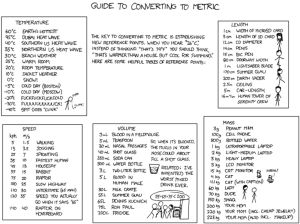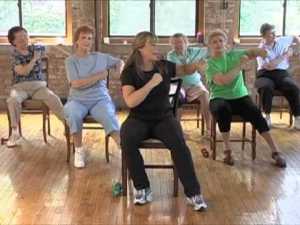Home » Meal Planning » Food for Thoughtful People
Food for Thoughtful People
- Jul, 09, 2015
- Adrienne
- Meal Planning, Health, Jewish food, Kosher, monthly shopping, Uncategorized
- 22 Comments.
Food for life
Food is not only a big part of Jewish life, but is necessary for everyone. If you are a working women, coming home and still having to make dinner can tempt you into buying fast food.
As part of the cooking section of Kasheringyourlife, I be posting recipes that help you stretch your meals and will not cost you a fortune. Most recipes will also not take more than 30 minutes to make.
I will be posting my own recipes as well as recipes from guests, the topics will be wide ranging and so will the cost of these recipes. Not all the recipes will be healthy and some will definitely fall under the indulgent category. They will also range from novice to experienced, vegan to carnivore, and everything in between.
Is there any heathly food left?
If you read Facebook, you will notice that just about everything from tap and bottled water, to certain previously healthy foods, has come under discussion. All the adverse effects and ‘poisons’ are highlighted to such an extent that it feels like we may be better off not eating anything and just taking a pill. Just about everything causes ADHD, eczema, constipation, diarrhoea, and even, G-d forbid cancer, (spit three times here!).
I try to be conscientious about the foods we eat but eating healthy is often very expensive. The dietician costs money, the diet clubs cost money, recipes that are healthy often don’t cater to the South African palate or the ingredients are not available here and the measurements are imperial (USA) when we and most of the world use Metric.
I dislike exercising at the gym, as I hate being around sweaty people (all those germs- sorry I am nurse). I lack the discipline to exercise at home. I know I am not alone in this. Exercise is great, it makes you feel good (once the pain stops) and it gives you energy. You won’t always lose weight while exercising because you may not be doing the right type of exercise. What happens to the people that are too large to go to the gym and too shy? How do they get healthy?
BMI vs Body weight
I do not go by how much you weigh but I do go by your body mass index (BMI), this is especially good with teen girls, as peer pressure to be thin is very strong. I remind my girls, as long as your BMI is within the healthy zone, whatever you weigh is the right weight, up to the age of 20. Also go by your clothes. Those very tight waists on your skirt or pants – are they a little more comfortable, then great.
The formula to work out BMI is your weight in KG divided by your height squared (e.g. 55kg/ (160cmx160cm)= BMI), this is only for adults over 20 years old. www.cdc.gov has a downloadable Excel, BMI calculator to work out the acceptable children’s BMI.
Please note that this is only a guide, pregnant women and athletes should not use this formula. Muscle weighs more than fat. Your BMI also does not indicate your percentage of body fat or muscle mass ratio. This would need to be measured by a qualified person. It does mean, however, that you could have a skinny person who is ‘overweight’ due to the amount of body fat they carry, or a large person who is ‘underweight’ as they do not have enough body fat.
I needed and still need to lose weight, so I spent a lot of time on the internet trying to work out how to go about this. Calorie counting has come up over and over again as a way to lose and keep your excess weight off.
Here comes the problem. We live on a tight budget, we also keep kosher and as stated I don’t exercise. Walking to Shul doesn’t count as exercise. Sorry.
The exorbitant price of kosher meat has always been in contention. I will not be getting into the subject on this.
For a lot of people it has become more and more difficult to cook with meat and fish is even more expensive per kg than meat.
Over the past few months I have been following a blog called http://www.loseweightbyeating.com/. In it Audrey talks about her journey from 125 kg to 68 kg in one year. She is unable to do a lot of exercise due to a medical condition. She designed her own weight loss program using calorie counting and meal planning. I am down 3kg with very little effort and no exercise.
The first thing to do is to plan your meals for the week or month ahead. Secondly, count your calories. Women may consume between 1200-1400 calories per day and men 1800-2200 calories per day. This also depends on your job. If you have an office job, use the lower number in the range, if you are active, then you use the higher number, but never less than 1200 for women and 1800 for men. Thirdly, increase your water intake (a problem for me as I really dislike the taste of water) Audrey suggests fruit infused water – not flavoured water. Lastly, and definitely very important, increase your physical activity.
Before putting children and teenagers onto a diet, they must, at least, see a dietician but should also see a paediatrician. Teenagers should also, as a guide, consume the same calories as an adult.
Remember, the more active you are, the more calories you burn. So even if you sit in a chair and watch TV, you can do simple things like leg raises and tightening your abdominal muscles (tummy muscles). http://www.rd.com has a nice set of exercises to do while cooking, but you can really do them anytime.
I have posted a mince recipe on the recipe page of the blog, with a calorie count. It is suitable for diabetics and hyperactive kids as it has a low GI (Glycaemic Index) count. It also uses much less meat that normal. It is really delicious. I have adapted it from the book ‘Eating for Sustainable Energy’. Basic Mince recipe
Do you have ideas on how to cut costs and improve your health without cutting the quality of the food your serve, if you do please share with us?
- accident prevention
- App reviews
- babies in cars
- Books
- Braai
- Bread Recipes
- budget gifts
- Budgeting
- Budgeting in South Africa
- calendar
- Celebrations
- Cellphone safety
- Chanuakah
- Chicken recipes
- Child safety
- Children
- Chrismukah
- Christmas gifts
- Daily budgeting for South Africans
- Debt
- distracted driving
- driver safety
- drowning
- Environmental Issues
- Family
- Family Calendar
- Finance
- food
- Food for toddlers
- Food Myths
- Freedom Day
- frugal gifts
- grocery shopping
- Health
- heat exhaustion
- Heat wave
- Heritage Day
- household management
- I -Plan
- I-cook
- Jewish food
- JOFR
- Johannesburg
- Kosher
- Lockdown
- Managing your household
- Meal Planning
- Meat Recipes
- monthly shopping
- Nurses Day
- Obesity
- online shopping
- Organisation and clean up
- Parenting
- personal finance
- Personal safety
- pets in cars
- Public Holidays
- Quick meals
- Random Ruminating
- Recipes
- Religious holidays
- Reviews
- saving money
- School
- slow cooker
- Slow cooker recipes
- Soup
- South African
- Specifically Jewish
- Summer
- Teenagers
- textbooks
- texting
- Tu B Av
- Uncategorized
- Vegetarian Recipes
- Winter
- Workers Day
- workshop
- Xmas gifts
- May 2025
- November 2023
- October 2022
- August 2021
- February 2021
- January 2021
- November 2020
- September 2020
- August 2020
- June 2020
- May 2020
- April 2020
- March 2020
- February 2020
- January 2020
- November 2019
- October 2019
- September 2019
- August 2019
- May 2019
- April 2019
- February 2019
- January 2019
- November 2018
- October 2018
- September 2018
- May 2018
- April 2018
- March 2018
- February 2018
- January 2018
- August 2017
- May 2017
- April 2017
- March 2017
- February 2017
- January 2017
- December 2016
- October 2016
- September 2016
- August 2016
- July 2016
- May 2016
- April 2016
- March 2016
- February 2016
- January 2016
- December 2015
- November 2015
- October 2015
- September 2015
- August 2015
- July 2015
- June 2015




Leave a Reply